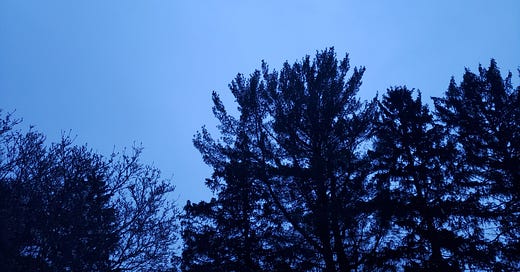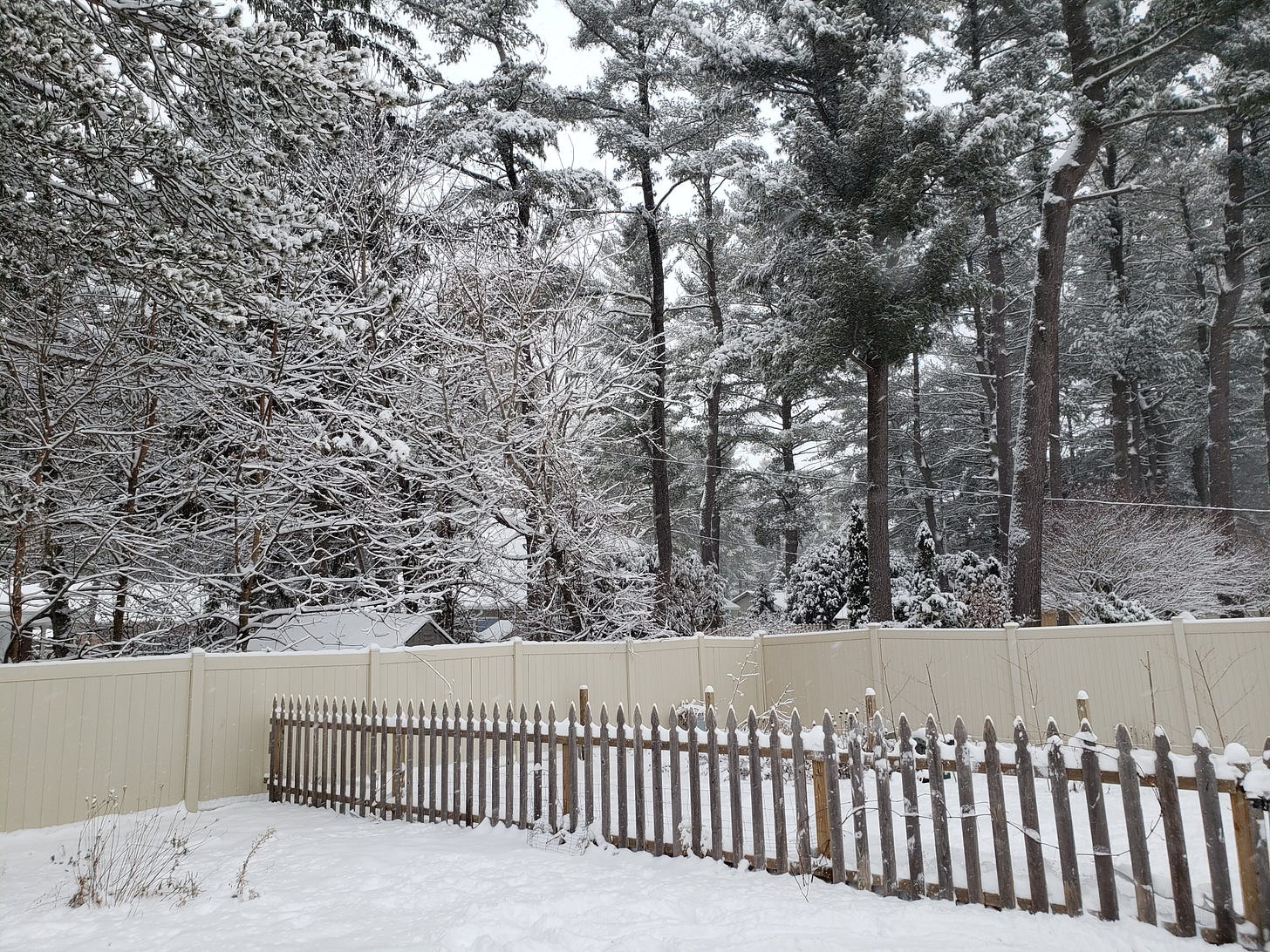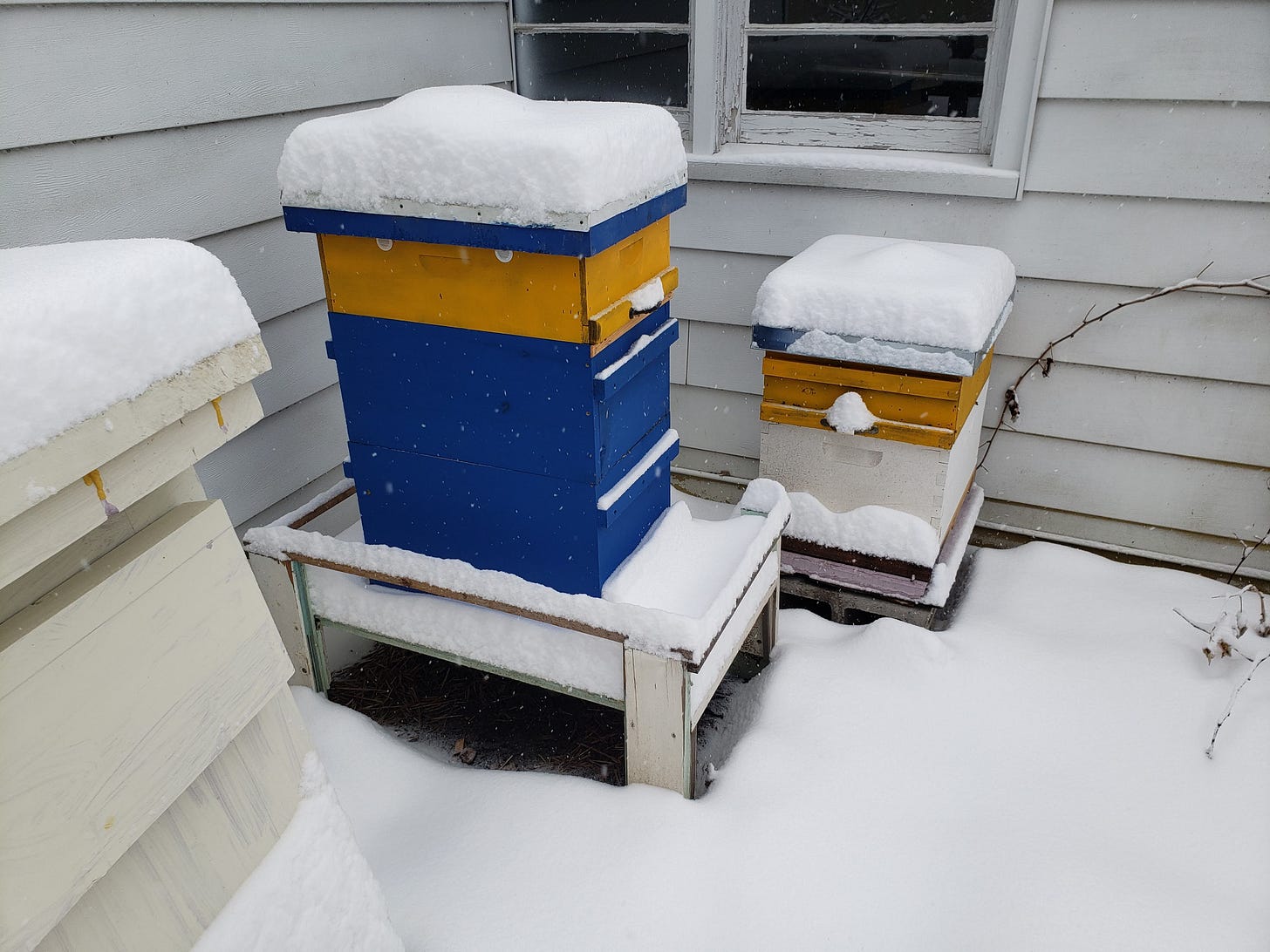Blizzards and Lesser Holidays
“January now reigns, hard work and short days, phlegmatic as old exiled Saturn.” Michael Judge, The Dance of Time: The Origins of the Calendar
That about sums up my feeling on the month we have now left behind. Quote from one of my current reads, full of interesting historical tidbits.
I was just so darn happy when I left work yesterday evening, to see that there was still daylight through the cloud cover. Anyone who has left their home in the darkness of morning and returned to it in the darkness of evening while working in artificial light all day can relate to the relief that the lengthening daylight brings.
Today is Candlemas in the Liturgical calendar. the Feast of the Presentation declared in the 7th century, but celebrated by Christians since the 4th century, with customary blessing and distribution of candles. It is 40 days since Christmas. Yesterday was the half way point between the Winter Solstice and the Spring Equinox, and the days are getting longer. It is the second day of Imbolc, the ancient Gaelic holiday that celebrated the return of the light and the approach of Spring.

Groundhog Day actually arose from Candlemas. The English liked to predict the arrival of Spring based on Candlemas weather: if was a bright sunny day, then Winter would hold sway or some such rhyme-y thing. When the feast was celebrated in Germany, they added a hedgehog to the mix (Maybe because they’re cute? Help me out if you know any special meaning assigned to hedgehogs!) and figured if it was sunny enough for the woodland rodent to see its shadow, then Winter was going to be long. German immigrants brought the tradition to the U.S. but substituted a locally available animal. And Hollywood made sure that the holiday is represented in a great movie. I was, however, disappointed to read in the news this morning that Punxsutawney Phil, the celebrity groundhog, doesn’t actually look for his shadow anymore, but rather puts out his paw and chooses 1 of 2 scrolls. Today he picked the Winter scroll. Is it just me who’s bothered by that? Does anyone else think he ought to at least make a show of looking for his shadow? If the roots of the holiday are in the brightness of the early February sun, where does a multiple choice test come in?

February has arrived here in a flashy show of sunlight and snow. The local schools had their first snow day of the year today, as we’re on the edge of the blizzard sweeping across multiple states. I happened to have the day off, and spent a delightful morning out in the falling snow with child and dogs. I had no need to be on the icy roads, so I had the luxury of viewing the weather in a romantic light.
What does all that history have to do with gardening? The ancient Wheel of the Year, the dates marking the sun and moon and seasons, were all used to mark the agricultural, herding, and husbandry practices of humans through the centuries. Before time was set by the ticking of clocks and our labor quantified by hourly wages, our ancestors recognized the effect of the heavens on their earthly periods of toil and rest. It is one of the best things I’ve found in gardening, this reconnection to the sacred nature of working the earth, a thread that binds us to those who lived before.
Garden Plans
February also brings the motivation to order seeds and plan this year’s garden. We have seeds from past years saved and somewhat organized, but it’s hard to resist those shiny seed catalogs and dreams of a glorious varied harvest. Last year’s planting was rather slap-dashed and random, so we’re hoping to better utilize the garden plot this year and improve our yield. Picturing tidier rows, thoughtful companion planting, disciplined removal of leggy volunteers, more regular weeding, and more timely preservation upon harvesting. I mean, it probably won’t quite end up that way, but goals are good, right?
New this year will be cucumbers, pole beans, sunflowers, eggplant, tarragon, leeks, asparagus, and spinach. Old favorites returning will be corn, tomatoes, butternut squash, zucchini, summer squash, thyme, parsley, and basil. There are some perennials that I count on to make their re-appearance: fennel, dill, chives, mint. And I have high hope for those potatoes. I love planting flowers in and among the food-producing plants, so will again be planting nasturtium, marigolds, calendula, zinnias, poppies, and wildflowers.
The strawberries should bear fruit in June and the raspberries in July, blueberries in August and grapes in September. Our little orchard is taking shape. The honey crisp apples (all 6 of them) from the tree last year were sooo yummy! No fruit yet from the pear tree but it’s still little. Last fall, we planted paw paw and peach trees. This Spring, we hope to add a Chicago fig. The mushroom logs will hopefully produce shiitake and reishi.
Bee Survival
We bought and planted native species around the property at the end of last summer, in order to wild the landscape a bit and provide the bees with progressive blooms over 3 seasons. Speaking of bees, fingers crossed that they are snug and alive in their hives, all grouped in a cluster for warmth… There’s no way to know until the next thaw, when we may see some out on cleansing flights (leaving the hive to poo, as they’re too polite to do that inside the hive) and bringing out their dead to the hive entrance.
We know that the odds may not be in our favor for our colonies’ survival. First year beekeepers especially often lose their hives to long freezes, starvation, disease. or predators. We trapped many mice and voles in traps beneath the hives through October and November. Rodents can wreak havoc in a hive if they manage to sneak in and build a nest or ravage the honey stores. We put mouse guards (wire grids) on the hive entrances, but struggled a bit with the timing as we didn’t want to impede the bees’ coming and going while there was still autumn foraging to be done.
Six More Weeks of Winter
Or as my 10-year-old said on hearing the news: “ Well, yeah. Of course there will be where we live.” She’s right; we generally can expect an April snowstorm and frost until Memorial Day. But this February light does have a different quality after the gray of the past few months, and having made it through January we can now set our eyes on Spring.
How does the arrival of February affect you, friends? Do you celebrate these holidays in any way? Are you planning your Spring planting? Let me know in the comments, or send a reply to this email. I’d love to hear your thoughts!
— Erin, in Michigan











Thanks for the progress update? Hey are you planting anything exotic? Do you have a map for your garden or is that overkill? Thanks so much Erin!
Chic Hanson:
Good read replete with great information about gardening.